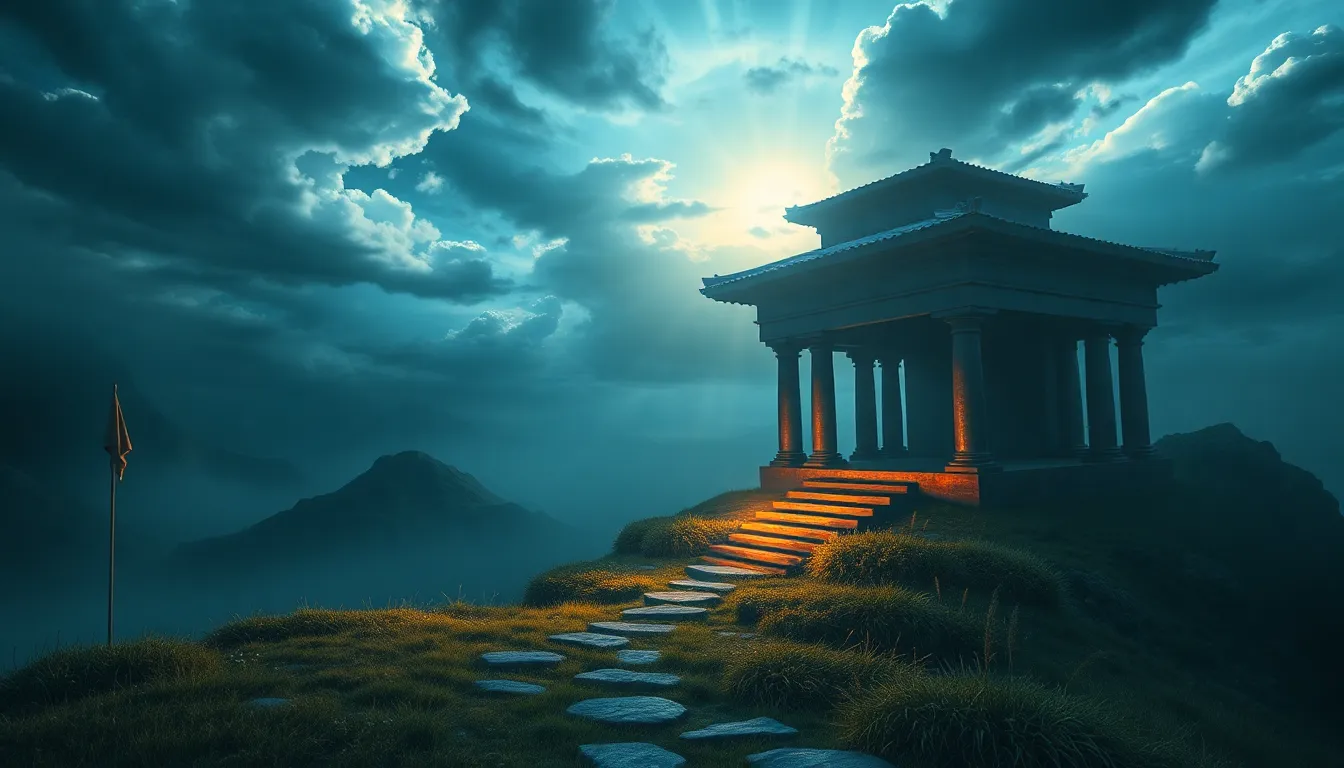The Sacred Valley: A Tapestry of Myth and Reality
The Sacred Valley of the Incas, nestled amidst the Andes Mountains of Peru, is more than just a breathtaking landscape. It’s a place where ancient myths intertwine with historical reality, crafting a tapestry of enchantment and mystery. For centuries, the valley has been revered as the heartland of the Inca Empire, a land of abundance, power, and cosmic significance. Here, the whispers of legends blend with the echoes of a lost civilization, inviting us to unravel the secrets of a bygone era. The Sacred Valley is a testament to the enduring power of myth, a place where past and present collide, and where the spirits of the ancient Incas still linger.
The Legend of the Origins: From Viracocha to the Incan Dynasty
The story of the Sacred Valley begins with Viracocha, the creator god in Incan mythology. According to legend, Viracocha emerged from Lake Titicaca, bringing forth the world and its inhabitants. He then travelled across the land, shaping mountains and valleys, before ascending to the heavens. The Incas believed that Viracocha was responsible for the creation of the Sacred Valley, a place of exceptional beauty and fertility. This act of creation set the stage for the rise of the Incan Empire, a civilization that flourished in the valley for centuries.
The Incas themselves were said to be descendants of Manco Capac, a legendary figure who emerged from the sacred cave of Pacaritambo, located in the heart of the Sacred Valley. Manco Capac, along with his sister-wife Mama Ocllo, were believed to be chosen by Viracocha to lead the Incan people. They brought with them the knowledge of agriculture, weaving, and social organization, laying the foundation for a thriving empire. The legend of Manco Capac and Mama Ocllo highlights the divine origins of the Incan dynasty, solidifying the Sacred Valley’s role as the birthplace of their civilization.
The Heart of the Empire: The Significance of the Sacred Valley
The Sacred Valley was not just a geographical region; it held immense cultural and symbolic significance for the Incas. It was considered the heart of their empire, the cradle of their civilization, and the center of their spiritual beliefs. The valley was a microcosm of the Incan worldview, a place where the physical world intersected with the spiritual realm. The Incan emperor himself resided at the heart of the Sacred Valley, in the magnificent city of Cusco, which served as the political and religious center of the empire.
The Sacred Valley was a testament to the Incan mastery of agriculture and engineering. The valley’s fertile soils, abundant water sources, and strategic location made it ideal for cultivating crops. The Incas developed intricate irrigation systems, terraces, and agricultural techniques that allowed them to produce a surplus of food, sustaining their population and fueling their empire’s growth. The valley’s strategic location, nestled between the Andes Mountains and the Amazon Basin, facilitated trade and communication throughout the empire.
A Land of Fertility and Abundance: The Role of Agriculture in Incan Mythology
The Incan mythology was deeply intertwined with the land and its bounty. The fertile soil of the Sacred Valley was seen as a gift from the gods, a testament to the divine power that sustained their civilization. The Incas believed that the earth was a living entity, imbued with spirits and deities. They worshipped Pachamama, the Earth Mother, who was responsible for the fertility of the land and the success of their crops.
The Incan concept of ayni, a principle of reciprocity and balance, extended to their relationship with the land. They understood that every action had a consequence, and that they needed to honor the earth in order to receive its bounty. This belief was reflected in their agricultural practices, which were marked by rituals, offerings, and a deep respect for the natural world. The Incas believed that the abundance of the Sacred Valley was a gift from the gods, a testament to their reverence for the earth and its cycles.
The Sacred Valley as a Cosmic Axis: Linking the Heavens and Earth
The Sacred Valley was not only a center of earthly power but also a cosmic axis, a bridge between the heavens and the earth. The Incas believed that the valley was aligned with the celestial bodies, particularly with the sun and the stars. The mountain peaks that surrounded the valley were seen as sacred pathways to the heavens, connecting the earthly realm with the divine.
The Incan calendar was closely aligned with the cycles of the sun, moon, and stars. Their festivals and rituals were timed to coincide with the solstices and equinoxes, reflecting their deep understanding of the cosmos. The valley’s unique geography, with its towering mountains and expansive skies, facilitated their connection to the heavens, reinforcing the idea that the valley was a sacred space, a microcosm of the universe.
The Incan Pantheon: Gods and Goddesses of the Sacred Valley
The Sacred Valley was not only a place of earthly abundance but also a center of spiritual worship. The Incan pantheon, a vast and complex system of deities, permeated every aspect of their lives. The Incas believed that these gods and goddesses influenced their destiny, guided their actions, and provided protection and sustenance. Notably, several deities were associated with the Sacred Valley, reflecting its unique significance in their cosmology.
Viracocha, the creator god, was considered the most powerful deity in the Incan pantheon. He was believed to have emerged from Lake Titicaca, shaping the world and its inhabitants, including the Sacred Valley. His presence lingered in the valley, reminding the Incas of his divine power and the origins of their civilization. Inti, the sun god, was another prominent deity worshipped in the Sacred Valley. The Incas revered Inti as the source of life and energy, and they believed that he bestowed his blessings upon the valley, ensuring its fertility and abundance. Inti's influence was evident in their festivals and rituals, which were often timed to coincide with the solstices and equinoxes, reflecting the sun's power over the natural world.
Pachamama, the Earth Mother, was a central figure in Incan mythology, representing the fertility of the land and the interconnectedness of all living things. She was worshipped throughout the empire, but her presence was particularly strong in the Sacred Valley, where the Incas relied on her blessings for a bountiful harvest. The Incas honored Pachamama through various rituals and offerings, recognizing her role in sustaining their civilization. Other deities associated with the Sacred Valley include Mama Killa, the moon goddess, who was believed to influence the tides and the lunar cycles, and Apu, the mountain spirits, who were revered as guardians of the sacred peaks that surrounded the valley.
Ancient Sites and Rituals: Echoes of a Lost Civilization
The Sacred Valley is a living testament to the Incan civilization, a place where the echoes of their rituals and beliefs still reverberate through the ancient ruins and sacred sites. The Incas constructed magnificent temples, palaces, and fortresses, each reflecting their unique architectural style and craftsmanship. These structures were not merely buildings; they were sacred spaces, imbued with spiritual significance and designed to connect the earthly realm with the divine.
One of the most prominent sites in the Sacred Valley is the citadel of Ollantaytambo, a magnificent fortress perched high above the valley floor. The Incas built Ollantaytambo to defend their territory against invading forces, but the site also served as a spiritual center, where rituals and ceremonies were performed to honor the gods. The Incas carved elaborate terraces, temples, and water channels into the slopes of the mountain, reflecting their mastery of engineering and their deep respect for the natural world.
The Sacred Valley is also home to numerous Inca ruins, including the impressive city of Pisac, known for its intricate terraces, ancient market, and archaeological sites. The Incas built Pisac as a center for agriculture, trade, and religious ceremonies. The remains of their buildings, temples, and irrigation systems offer a glimpse into the complexity of their civilization and the ingenuity of their builders. The Incas believed that the Sacred Valley was a place where the spirits of their ancestors lingered, and they performed rituals and offerings to honor their memory.
The Sacred Valley as a Source of Power: Royal Tombs and Places of Worship
The Sacred Valley was not only a center of life and fertility but also a place of death and spiritual transformation for the Incas. The valley's sacred mountains and ancient ruins served as the final resting places for Incan rulers and elite members of society. The Incas believed that death was not an end but a transition to the spirit world, and they honored their deceased ancestors with elaborate burial ceremonies and offerings.
In the heart of the Sacred Valley, the ancient city of Cusco, the Incan capital, was home to the Temple of the Sun, a magnificent structure dedicated to Inti, the sun god. The temple was adorned with gold and silver, reflecting the Incan belief that the sun was the source of life and energy. Within the temple, the Incan emperor performed elaborate rituals, seeking Inti's blessings and guidance. The Incas also believed that the mountains surrounding the Sacred Valley were sacred places, inhabited by spirits and deities. They climbed the mountains to perform rituals and offerings, seeking the blessings of the Apu, the mountain spirits, who were believed to protect and guide their people.
The Sacred Valley served as a source of spiritual power for the Incas, a place where they connected with their ancestors, honored the gods, and sought guidance and protection. The Incan belief in the sanctity of the valley, and the significance of its mountains, rivers, and ruins, continues to inspire awe and wonder in visitors today.
Theories of the Myth: Historical, Archaeological, and Anthropological Perspectives
The myths surrounding the Sacred Valley continue to fascinate scholars and historians, offering a window into the Incan worldview and their complex relationship with the natural world. The Incan myths were not simply tales; they reflected the Incas' deep understanding of their environment, their social structures, and their spiritual beliefs.
Historians and archaeologists have analyzed the Incan myths through the lens of historical evidence, uncovering the physical structures and artifacts that support the legends. They have examined the architectural features of ancient sites, the intricate irrigation systems, and the remains of temples and palaces, seeking to understand the practical and spiritual significance of these structures. Anthropologists have studied the Incan myths from a cultural perspective, analyzing the social and religious beliefs that underlie the stories. They have examined the Incan concepts of ayni – a principle of balance and reciprocity – the importance of Pachamama, the Earth Mother, and the role of the Incan pantheon in shaping their worldview.
The theories surrounding the Incan myths have helped us to understand the Incan civilization in a more comprehensive way. They have shed light on their religious beliefs, their social organization, and their relationship with the natural world. The myths continue to inspire awe and wonder, reminding us of the enduring power of human imagination and the importance of understanding the past to appreciate the present.
The Enduring Legacy of the Sacred Valley: From Myth to Modern Tourism
Today, the Sacred Valley is a popular destination for tourists, drawn to its breathtaking beauty, its rich history, and its captivating myths. Visitors can explore the ancient ruins, marvel at the Incan architecture, and learn about the Incan civilization through guided tours and museums. They can hike through the mountains, explore the markets, and experience the vibrant culture of the local communities.
The Sacred Valley is a reminder of the enduring power of myths, their ability to inspire, inform, and connect us to the past. The myths of the Sacred Valley have transcended generations, shaping the landscape, guiding the lives of the Incan people, and leaving a lasting legacy that continues to enchant and inspire.
The Sacred Valley is not merely a place of breathtaking beauty; it is a place where myth and reality intertwine, where the echoes of the ancient Incas still resonate, and where the spirits of the mountains and the stars continue to guide us.
FAQ
What is the Sacred Valley?
The Sacred Valley of the Incas is a fertile valley located in the Andes Mountains of Peru. It was the heart of the Inca Empire and holds immense cultural and symbolic significance for the Incas.
What are some of the most important myths associated with the Sacred Valley?
Some of the most important myths associated with the Sacred Valley include the creation myth of Viracocha, who is believed to have shaped the valley and the Incan dynasty, the legend of Manco Capac, the first Inca emperor, who emerged from a sacred cave in the valley, and the importance of Pachamama, the Earth Mother, who was worshipped for her fertility and protection.
What makes the Sacred Valley special?
The Sacred Valley is special because of its stunning beauty, its rich history, and its captivating myths. It is a place where the Incan civilization flourished, leaving behind a legacy of magnificent ruins, ancient cities, and spiritual sites. The valley also holds immense cultural and spiritual significance for the Incan people and their descendants.
What are some of the things to see and do in the Sacred Valley?
Some of the things to see and do in the Sacred Valley include exploring the ancient ruins of Ollantaytambo, Pisac, and Chinchero, visiting the Sacred Valley Market, hiking through the mountains, and experiencing the vibrant culture of the local communities.
What is the best time to visit the Sacred Valley?
The best time to visit the Sacred Valley is during the dry season, from May to October. The weather is sunny and warm, and there is less rainfall. However, the valley is a popular destination year-round, so it's always a good idea to book your accommodations and tours in advance.



